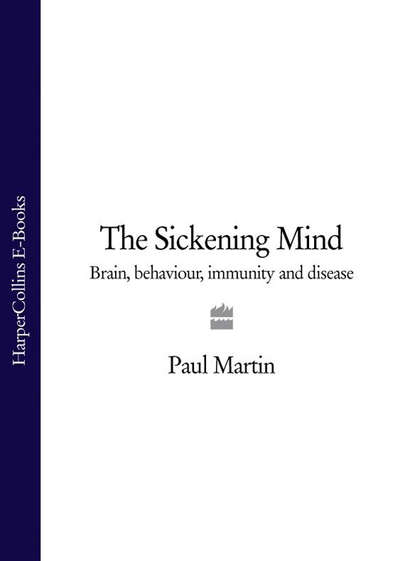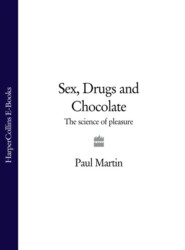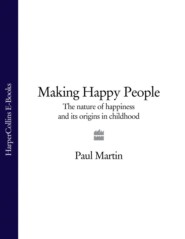По всем вопросам обращайтесь на: info@litportal.ru
(©) 2003-2024.
✖
The Sickening Mind: Brain, Behaviour, Immunity and Disease
Настройки чтения
Размер шрифта
Высота строк
Поля
Smokers now acknowledge the unappetizing fact that their behaviour significantly increases their risk of dying prematurely from heart disease or cancer. Nevertheless, psychological research has established that they seriously underestimate the magnitude of that risk. There is a consistent ‘optimistic distortion’ of perceived health risks among smokers; they know smoking is bad for them but they do not recognize just how bad. No matter how often the statistics are quoted they do not seem to sink in. One reason why the health consequences of smoking have such a muted impact on people’s perceptions is the large delay, often measured in decades, between starting to smoke and falling ill.
If you should happen to be an overweight, tobacco-addicted, boozing, couch potato who loves fried food, you can take a few crumbs of comfort from the fact that others’ attempts at healthy living can backfire. Dieting, for example, almost invariably fails to bring about the desired result of sustained weight loss. The sense of personal failure that comes as the scales lurch upwards again can produce a damaging drop in self-esteem and a sense of losing control; the frustrated dieter’s response may be to abandon the diet and thus swing back to even greater porkiness. Mother Nature also conspires against the earnest dieter. People whose body weight oscillates because of dieting have a greater risk of premature death from coronary heart disease or other causes. Unsuccessful dieting can be bad for your health – and most dieting is ultimately unsuccessful.
What of behavioural self-destruction in literature? Fiction is littered with protagonists who recklessly expose themselves to danger, neglect their health or run themselves into an early grave because of great unhappiness or emotional turmoil.
An early case history of self-destruction appears in Le Morted’Arthur, Sir Thomas Malory’s fifteenth-century version of the legends of King Arthur and the knights of the Round Table. It is the sad tale of the Fair Maiden of Astolat and her doomed love for Sir Launcelot.
The brave, noble, irresistibly attractive Sir Launcelot rides to Astolat en route to a joust, and stays the night there at the home of the elderly baron, Sir Bernard of Astolat. Sir Bernard has a beautiful and virginal young daughter, the Fair Maiden of Astolat, who is at once smitten by Sir Launcelot. She is, as Malory so engagingly puts it, ‘hot’ in her love for the noble knight: ‘for he is the man in the world that I first loved, and truly he shall be last that ever I shall love.’ (Astolat, by the way, is Guildford and the maiden’s name is Elaine. Fortunately, ‘The Fair Maiden of Astolat’ has more Arthurian resonance than ‘Elaine of Guildford’.)
Sir Launcelot is grievously wounded and the Fair Maiden goes to look after him. Night and day she tends him, until his wounds are healed and Sir Launcelot is ready to take his leave. The Fair Maiden of Astolat beseeches Sir Launcelot to marry her or, failing that, at least go to bed with her. But the upstanding knight will not countenance marriage and refuses to dishonour the Fair Maiden by indulging in extramarital frolicking. She begs him again to be her husband or her lover, but to no avail. ‘“Alas,” said she, “then must I die for your love.”’ The noble knight leaves Astolat to get back to some real man’s work (fighting), leaving the emotionally wrecked Fair Maiden of Astolat behind him. Her mental state and self-destructive behaviour soon wreak havoc upon her physical health:
Now speak we of the Fair Maiden of Astolat that made such sorrow day and night that she never slept, ate, nor drank … So when she had thus endured a ten days, that she feebled so that she must needs pass out of this world, then she shrived her clean, and received her Creator … ‘it is the sufferance of God that I shall die for the love of so noble a knight … I loved this noble knight, Sir Launcelot, out of measure, and of myself, good Lord, I might not withstand the fervent love wherefore I have my death.’
True words from the Fair Maiden of Astolat, because very soon she dies. Clutched in her hand is a letter proclaiming her love for Sir Launcelot. That love has sent the Fair Maiden to her death, a death achieved through her behaviour.
Reckless behaviour allied with emotional distress can destroy an individual’s physical health, as illustrated in Jude the Obscure, Thomas Hardy’s novel about ‘a deadly war waged between flesh and spirit’.
Jude Fawley, a self-educated young man of lowly origins, aspires to leave his unlovely country village and enter the hallowed portals of Christminster (Oxford) University. But the restrictions imposed upon Jude by class and poverty mean that he must instead make his way as a humble stonemason. Jude’s romantic life is as frustrating and unsuccessful as his academic life. After being trapped into an ill-fated marriage to a pig-breeder’s daughter he falls in love with his cousin Sue. The two are drawn together by an almost mystical affinity, but Sue leaves him to marry an older man. The two lovers are eventually united and live together, unmarried and condemned by society, in poverty and unhappiness. In the end Jude loses Sue, who returns to her husband.
Having failed to fulfil both his intellectual and romantic desires, Jude goes into physical and mental decline. Like many a nineteenth-century tragic hero, he succumbs to a consumptive illness which proves to be terminal. Jude’s behaviour exacerbates his medical condition. With careless disregard for his health he makes a long journey on foot in the pouring rain to see Sue for the last time. She rejects his pleas and he returns to Christminster, physically and emotionally broken. But, as Jude explains to his former wife, he was fully aware of the risk to his health when he undertook the journey:
I made up my mind that a man confined to his room by inflammation of the lungs, a fellow who had only two wishes left in the world, to see a particular woman, and then to die, could neatly accomplish those two wishes at one stroke by taking this journey in the rain. That I’ve done. I have seen her for the last time, and I’ve finished myself – put an end to a feverish life which ought never to have begun!
Eventually he dies, alone and neglected, not yet thirty years old. Hardy implicitly takes a multi-causal view of Jude’s final illness, since environmental and constitutional factors play a role in it, together with psychological stress.
(#litres_trial_promo) His emotional distress at losing Sue and at the death of their children acted as a trigger, but the illness also has antecedents in Jude’s weak constitution and the harsh conditions he endured during his time as a stonemason:
I was never really stout enough for the stone trade, particularly the fixing. Moving the blocks always used to strain me, and standing the trying draughts in buildings before the windows are in, always gave me colds, and I think that began the mischief inside.
Most of us die sooner than we have to because of the way we behave and the choices we make. Personally, though, I have some sympathy with Publilius Syrus, who two thousand years ago expressed the opinion that: ‘They live ill who expect to live always.’
Mind over immune matter (#ulink_ad758723-b2cd-54cf-bd62-6e7905c819b6)
In this struggle Tarrou’s robust shoulders and chest were not his greatest assets; rather, the blood which had oozed under Rieux’s needle and, in this blood, that something more vital than the soul, which no human skill can bring to light.
Albert Camus, The Plague (1947)
We turn now to a less visible, but no less important, mechanism by which the mind and body interact to affect health: the immune system. Among the most important developments in recent years has been the discovery of numerous biological pathways connecting the brain with the body’s defence and regulatory mechanisms. Through these pathways the biological system that underlies our thoughts, emotions and behaviour – the brain – can exert a pervasive influence on the biological system that defends the body against most forms of disease – the immune system.
Our physical health depends critically on how well our immune system is functioning. One reason why a person suffering from psychological stress is more susceptible to colds and infections is because their immune system is less able to resist when they are exposed to disease-causing viruses or bacteria. In the following chapters we shall be exploring the manifold ways in which the mind and immune system affect each other. But before we do this we need to clarify a few basic issues.
So far I have referred rather sweepingly to the mind’s effect on the immune system, as though the immune system were a homogeneous entity whose activities could be measured in a simple way, like temperature or blood pressure. In reality, the immune system is a breathtakingly complex and subtle entity whose intricate workings are still far from being fully understood. Immunology is one of the branches of science that has made the most spectacular leaps in understanding over the past thirty years, but it still has a very long way to go. To unravel how the mind influences physical health we must first establish what the immune system does and how it works.
UNDERSTANDING IMMUNITY (#ulink_6bdbb82d-593a-53f7-a479-5797f6f2517a)
The immune system is one of the great wonders of nature, rivalled only by the brain in its intricacy and elegance of design. It is a multi-layered system of biological defences whose primary purpose is to defend the body from bacteria, viruses, fungi, parasites, toxins, cancerous cells and other disease-causing agents. The immune system is indeed a system, in the strict sense of the word: a highly complex and co-ordinated array of interrelated, interacting elements.
Like the economy of a nation, the immune system is not located exclusively in one place. In fact, the cells of the immune system are spread out all over the body. The majority are located in those organs whose purpose often seems slightly mysterious to the layperson: the thymus (located at the base of the neck); the spleen (below and behind the stomach); the lymph nodes (clumps of tissue in the armpit, groin, behind the ears and elsewhere); the bone marrow; the tonsils; and obscure backwaters of the gut (Peyer’s patches and the appendix).
Immune cells are also to be found in the blood. These are the white blood cells (or leucocytes). Immune cells are carried in the bloodstream to locations in the body where they are needed, particularly sites of injury or infection. When an area of tissue is injured or infected an inflammatory response is triggered: the blood vessels swell up and become more permeable, thus increasing the supply of blood and immune cells to the damaged area.
There are numerous types of white blood cell, but here we are primarily concerned with the lymphocytes, which make up about a quarter of all white blood cells in humans. Lymphocytes can be subdivided into three main categories: B-lymphocytes, T-lymphocytes and natural killer cells.
(#litres_trial_promo) The latter are capable of spontaneously killing certain virus-infected or cancerous cells.
The body is protected by layer upon layer of immune defences, rather like the proverbial onion. Simple accounts of the immune system (and this is a very simple account) usually divide its actions into two categories: the very clever and the mind-bogglingly clever; or, more conventionally, non-specific immune responses and specific immune responses.
Non-specific immune responses are the body’s first line of defence against bacteria, parasites and other foreign material. Their basic purpose is to prevent potentially harmful foreign materials from entering the body in the first place, or to destroy them when they do enter. They achieve this without recognizing precisely which foreign material they are dealing with.
At the simplest level, non-specific defences include the physical barrier of the skin; the minute hairs called cilia in the respiratory tract and elsewhere which expel foreign particles from the body; and chemical defences such as stomach acid and bacteria-destroying enzymes in saliva and tears. A more sophisticated layer of non-specific immune defence is provided by various classes of white blood cells, notably the monocytes and neutrophils. These can ingest and destroy bacteria and foreign particles, a process known as phagocytosis (literally ‘cell-eating’). They also help other white blood cells to kill microorganisms, and produce vital chemical messenger molecules called cytokines which co-ordinate different aspects of the immune response.
Now we come to the mind-bogglingly clever part of the immune system: the part that can recognize and respond specifically to each and every type of foreign material it encounters. This is the specific (or acquired) immune response. It has the ability to make ultra-fine distinctions between material that forms part of your body and material of foreign origin – in other words, between ‘self’ and ‘non-self’. This can be achieved because the immune system contains within it a detailed image of your body. Anything that deviates from this image, including some cancer cells, is recognized as foreign and attacked. A foreign substance that generates a specific immune reaction when it encounters the immune system is referred to as an antigen (short for antibody generator).
The ability to distinguish reliably between ‘self’ and ‘non-self’ allows the immune system to attack foreign material without harming your body’s own healthy cells. Your immune system could detect the difference between a cell from your body and an apparently identical cell from my body. This is why transplanting tissue from one person to another can be such a tricky business, requiring the use of immune-suppressive drugs. In order to circumvent the immune response certain parasites have evolved the ploy of disguising themselves as the host’s own tissue, tricking the host’s immune system into regarding them as ‘self’ rather than ‘non-self’.
It is helpful to subdivide the specific immune response into two main categories: humoral (or antibody-mediated) immunity; and cell-mediated immunity. Humoral immunity is concerned with attacking antigens that are floating around in the body fluids surrounding your cells as opposed to antigens inside the cells – hence ‘humoral’ from the old word ‘humour’, meaning bodily fluid. Humoral immunity essentially involves the production of antibodies by B-lymphocytes.
Antibodies are a type of protein molecule called the immunoglobulins.
(#litres_trial_promo) They are the body’s mainstay against bacterial infection. Each antibody is unique to one particular antigen, so there are as many types of antibody as there are antigens. When a B-lymphocyte meets the particular antigen to which it responds, it undergoes biochemical changes and starts producing multiple copies of itself, a process known as proliferation. The newly formed cells that result from this proliferation, called plasma cells, then secrete antibodies into the blood. These antibodies latch on to the antigen and, all being well, the antibody-antigen complex is then chomped up by a passing phagocyte.
Cell-mediated immunity, the other main variety of specific immune response, is primarily concerned with attacking antigens inside the cells – for example, viruses. It is also responsible for the body’s immune reactions to transplanted tissues and tumours. Its main agents are the T-lymphocytes, which can recognize and kill target cells, such as those infected with viruses and foreign cells. Unlike antibodies, however, T-lymphocytes are unable to attack antigens that are floating around by themselves; instead they are dependent on other immune cells which ‘present’ the antigen to them, while at the same time stimulating the T-lymphocytes to attack by releasing chemical messenger substances known as cytokines. When stimulated in this way, T-lymphocytes proliferate and transform themselves into various subclasses with specific functions. Cytotoxic T-cells attack the antigen, while suppressor T-cells and helper T-cells regulate the whole delicate process. They do this by producing cytokines which alter the activity of other immune cells. Helper T-cells also stimulate B-lymphocytes to produce antibodies. The biological mechanisms regulating all of this are immensely complex.
The immune system learns and adapts each time it encounters a new antigen, setting a pattern for the way it will respond should it meet that antigen again. This is why you can be immunized against certain diseases, such as polio, typhoid, tetanus, rabies, diphtheria and chickenpox, and why there are diseases you catch only once in a lifetime. In this respect the immune system is like the brain: it detects and responds to specific stimuli in the outside world and then forms a long-lasting memory of those stimuli.
Vaccination exploits these immunological memory processes. A harmless fragment or heat-killed version of the bacteria or viruses is injected into the body. The antigens in the vaccine trigger the production of antibodies, but not the disease. The immune system is thus better prepared when it encounters the genuine item. Some micro-organisms are able to keep changing their biochemical appearance, which prevents the immune system from learning about them. The viruses responsible for the common cold and influenza are particularly good at this trick, which is why we do not develop permanent immunity to colds and ’flu.
Many things can impair the effectiveness of the immune system, including genetic defects, drugs and disease. There is also a general decline in immune function with old age. Sleep deprivation and poor nutrition both have marked effects on the immune system, too. Experiments on volunteers have ascertained that two or three days of sleep deprivation will produce significant reductions in various aspects of immune function. Even modest disturbances in sleep patterns can bring about measurable changes in the immune system. A study of healthy male volunteers found that depriving men of sleep for a few hours between 3 a.m. and 7 a.m. was enough to lower the immunological activity of their natural killer cells by more than a quarter. A good night’s sleep returned it to normal.
What happens when the immune system goes wrong? Although it is vital to our existence, most people have only a vague understanding of what the immune system does and seldom give it a thought until it malfunctions. If it fails to recognize and destroy potentially harmful agents such as bacteria, viruses or cancer cells the result may be a serious disease. Those born with defects in their humoral immune responses suffer from recurrent, severe infections.
AIDS is a vivid example of what happens when the immune system is damaged. The human immunodeficiency virus (HIV) wreaks its havoc mainly by destroying the victim’s helper/inducer T-lymphocytes. The eventual outcome is the almost invariably fatal condition known as Acquired Immune Deficiency Syndrome, or AIDS. One of the hallmarks of AIDS is a dramatic fall in the number and activity of helper/inducer (CD4) T-lymphocytes, though HIV does affect the immune system in other ways as well. An individual whose immune system is crippled by HIV becomes easy prey for a range of opportunistic infections and tumours, such as pneumonia, tuberculosis, Kaposi’s sarcoma and non-Hodgkin’s lymphoma, and it is usually one of these that kills the victim in the end.
AUTOIMMUNITY (#ulink_188ccfb4-f94d-59b7-9f97-eb562e6eed72)
In addition to destroying potentially harmful antigens, the immune system must be able to identify and avoid attacking its own body. Discriminating accurately between ‘self’ and ‘non-self’ is a fundamental requirement. There are times, however, when this discrimination fails for some reason and the immune system starts attacking ‘self’. B-lymphocytes manufacture antibodies against other cells in the body and these autoantibodies start to attack healthy tissue. The result is an autoimmune disorder. Those who liken the immune system to an army repelling foreign invaders have used the illuminating metaphor of ‘friendly fire’ to describe the phenomenon of autoimmunity.
Autoimmunity is thought to play a role in at least twenty (and perhaps in excess of forty) diseases, and the list is growing. Among those included are rheumatoid arthritis; various thyroid disorders such as Graves’s disease and Hashimoto’s disease; primary biliary cirrhosis of the liver; systemic lupus erythematosus; Guillain-Barré syndrome; multiple sclerosis; diabetes mellitus; uveitis; pernicious anaemia; myasthenia gravis; and inflammatory bowel disorders such as celiac disease, ulcerative colitis and Crohn’s disease.
The mechanisms of autoimmunity are not fully understood. Certain autoimmune diseases appear to arise because cells become altered in various ways – perhaps by viral infection or mutation – so that the immune system no longer recognizes them as ‘self’. In other cases, autoimmunity results from a failure in the complex and delicately balanced mechanisms that regulate the immune system.
Genetic factors are known to play an important role in some autoimmune disorders. For example, insulin-dependent diabetes mellitus (otherwise known as childhood-onset diabetes) results from the autoimmune destruction of cells in the pancreas, the organ responsible for producing the blood sugar-regulating hormone insulin. Diabetics have a genetic predisposition to develop the disease. But environmental factors, including stress, also play their part in determining whether a genetically predisposed individual actually develops the disease. Even if one of a pair of genetically identical twins has diabetes there is still a 50–70 per cent chance that the other twin will not get the disease. Chronic psychological stress significantly increases the risk that those who are genetically predisposed will advance to full-blown diabetes.
Females are much more susceptible than males to a number of autoimmune diseases, and this is true both in humans and other species. Women are three times more likely than men to suffer rheumatoid arthritis, six times more likely to develop autoimmune thyroiditis, and at least ten times more likely to suffer from systemic lupus erythematosus. This sex difference in disease susceptibility is at least partly a consequence of hormonal differences; male and female sex hormones, such as testosterone, progesterone and oestradiol, influence the immune system in various ways.
Autoimmune diseases result from excessive or inappropriate immune activity. Accordingly, they may be ameliorated by drugs that suppress the immune system – the opposite of what happens in normal infectious diseases. This is why doctors use immune-suppressive drugs to treat autoimmune diseases.
MEASURING IMMUNITY (#ulink_30c6c5a0-efbb-5e71-9c97-7afa7fb79ad8)








